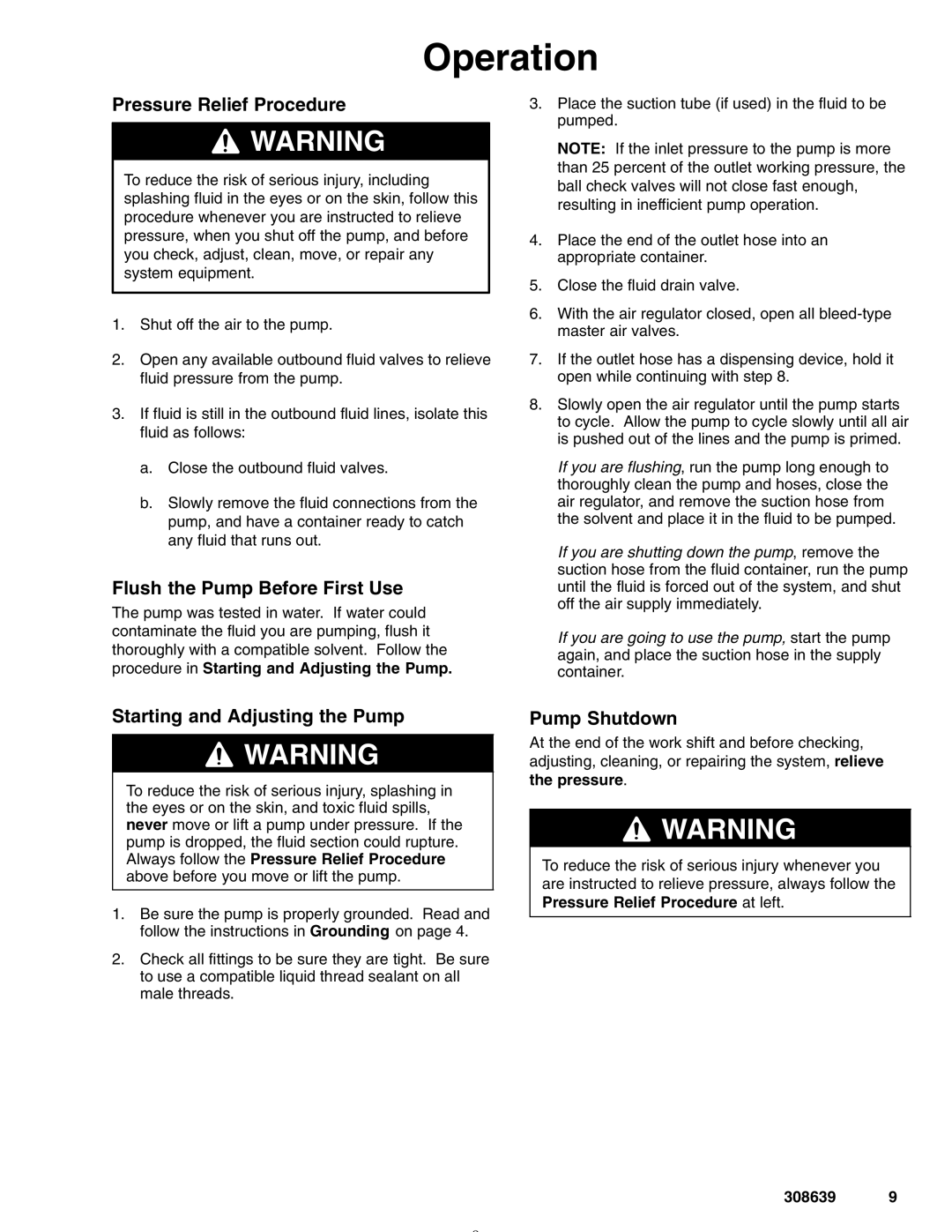
Operation
Pressure Relief Procedure
![]() WARNING
WARNING
To reduce the risk of serious injury, including splashing fluid in the eyes or on the skin, follow this procedure whenever you are instructed to relieve pressure, when you shut off the pump, and before you check, adjust, clean, move, or repair any system equipment.
1.Shut off the air to the pump.
2.Open any available outbound fluid valves to relieve fluid pressure from the pump.
3.If fluid is still in the outbound fluid lines, isolate this fluid as follows:
a.Close the outbound fluid valves.
b.Slowly remove the fluid connections from the pump, and have a container ready to catch any fluid that runs out.
Flush the Pump Before First Use
The pump was tested in water. If water could contaminate the fluid you are pumping, flush it thoroughly with a compatible solvent. Follow the procedure in Starting and Adjusting the Pump.
3.Place the suction tube (if used) in the fluid to be pumped.
NOTE: If the inlet pressure to the pump is more than 25 percent of the outlet working pressure, the ball check valves will not close fast enough, resulting in inefficient pump operation.
4.Place the end of the outlet hose into an appropriate container.
5.Close the fluid drain valve.
6.With the air regulator closed, open all
7.If the outlet hose has a dispensing device, hold it open while continuing with step 8.
8.Slowly open the air regulator until the pump starts to cycle. Allow the pump to cycle slowly until all air is pushed out of the lines and the pump is primed.
If you are flushing, run the pump long enough to thoroughly clean the pump and hoses, close the air regulator, and remove the suction hose from the solvent and place it in the fluid to be pumped.
If you are shutting down the pump, remove the suction hose from the fluid container, run the pump until the fluid is forced out of the system, and shut off the air supply immediately.
If you are going to use the pump, start the pump again, and place the suction hose in the supply container.
Starting and Adjusting the Pump
![]() WARNING
WARNING
To reduce the risk of serious injury, splashing in the eyes or on the skin, and toxic fluid spills, never move or lift a pump under pressure. If the pump is dropped, the fluid section could rupture. Always follow the Pressure Relief Procedure above before you move or lift the pump.
1.Be sure the pump is properly grounded. Read and follow the instructions in Grounding on page 4.
2.Check all fittings to be sure they are tight. Be sure to use a compatible liquid thread sealant on all male threads.
Pump Shutdown
At the end of the work shift and before checking, adjusting, cleaning, or repairing the system, relieve the pressure.
![]() WARNING
WARNING
To reduce the risk of serious injury whenever you are instructed to relieve pressure, always follow the Pressure Relief Procedure at left.
